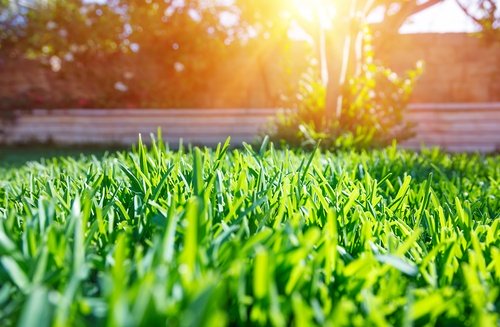With a name belies them, sod webworms are not really worms. Instead, they are a turf caterpillar with over twenty different varieties. And they can wreak havoc on your lawn! As they infest at the root level of your beautifully green grass, they munch on the leaves so that the grass eventually dies and turns brown. If you have an infestation of sod webworms, you’ll begin to notice small brown patches in your grass that will eventually grow larger–and take over the whole yard if not controlled.
What are Sod Webworms?
An early stage in the life cycle of the lawn moth, sod webworms are larvae that live in grass at the root (or thatch) level. In an effort to get themselves ready for their next stage of life, the larvae feed furiously on the underside of the leaves, leaving dead brown patches throughout the yard.
Life Cycle of Sod Webworms
Understanding the life cycle of the sod webworm is critical for controlling it. Most moths of the webworm variety lay their eggs in the springtime. The entire life cycle takes between six and ten weeks from egg to adult which means that each year offers the potential for several generations of lawn damage. If you’re hoping that winter will kill them, it won’t. During the winter, sod webworms survive in silk-lined tunnels that sit just under the surface of the soil. The larvae then resume feeding as the weather warms in the springtime. The larvae stages is the best time to control sod webworms.
When the larvae move on to the pupate stage, they weave cocoons made out of silk and small amounts of dirt. Adult moths emerge about two weeks after the cocoons begin pupating.When adult moths moths mate, the females begin scattering their eggs (possibly several hundred each!) onto the surface of the grass as they fly. These eggs hatch into larvae within a week, spinning webs and feeding on the root level of grass and leaves for several weeks. And the cycle begins again.
Schedule your Sod Webworm Treatment!
Why Sod Webworms are Bad for Your Grass
Adult sod webworms are actually moths that don’t really do any harm to your grass. But as they mate, the females lay the eggs which is what can cause the most problems. When the larvae feed, they chew on the top growth of tender grass and leave behind large brown patches of dead grass which may be difficult to restore to health. Some people may mistake sod webworm damage with damage that has been induced by drought. But drought damage is more likely to affect the entire lawn, rather than just certain patches.
See Also: Keeping Wildlife Out of Your Garden Or Backyard
How to Control Sod Webworms
Controlling sod webworms begins with good lawn care.
Prevention. Regular watering and reduction of the amount of thatch that is growing underneath the top level of grass may help to make your lawn less desirable to sod webworms.
Choose Grass Wisely. If you are in an area that is susceptible to sod webworms, plant turf grass that is formulated to be resistant to the pests.
Fertilize. Maintaining the health of your lawn with regular fertilization will help it to bounce bank in the case of an infestation.
Call a Professional. Your best bet is to contact a professional pest management service that can provide the highest quality, safest option for commercial or residential pest control. Minus the hassle or worry of doing it on your own. Webworm removal requires two treatments to your lawn.
Sod webworms can ruin your beautiful lawn if you let them. Keeping a healthy lawn, watching for signs of pests, and contacting your local pest control professional can help you stay on top of problems before they get away from you. For Houston pest control, Cypress Creek is a family oriented company providing prevention, extermination and maintenance services for all your commercial or residential pest control needs.



